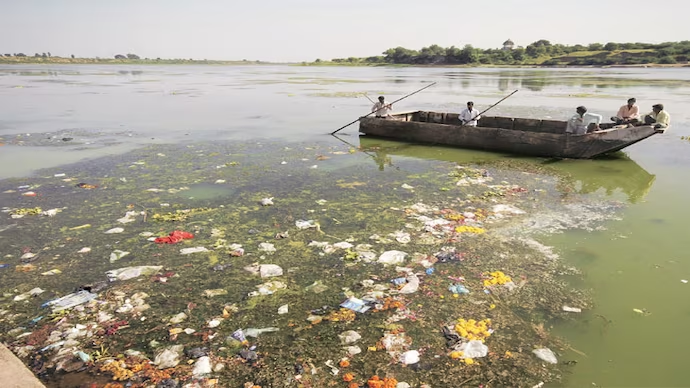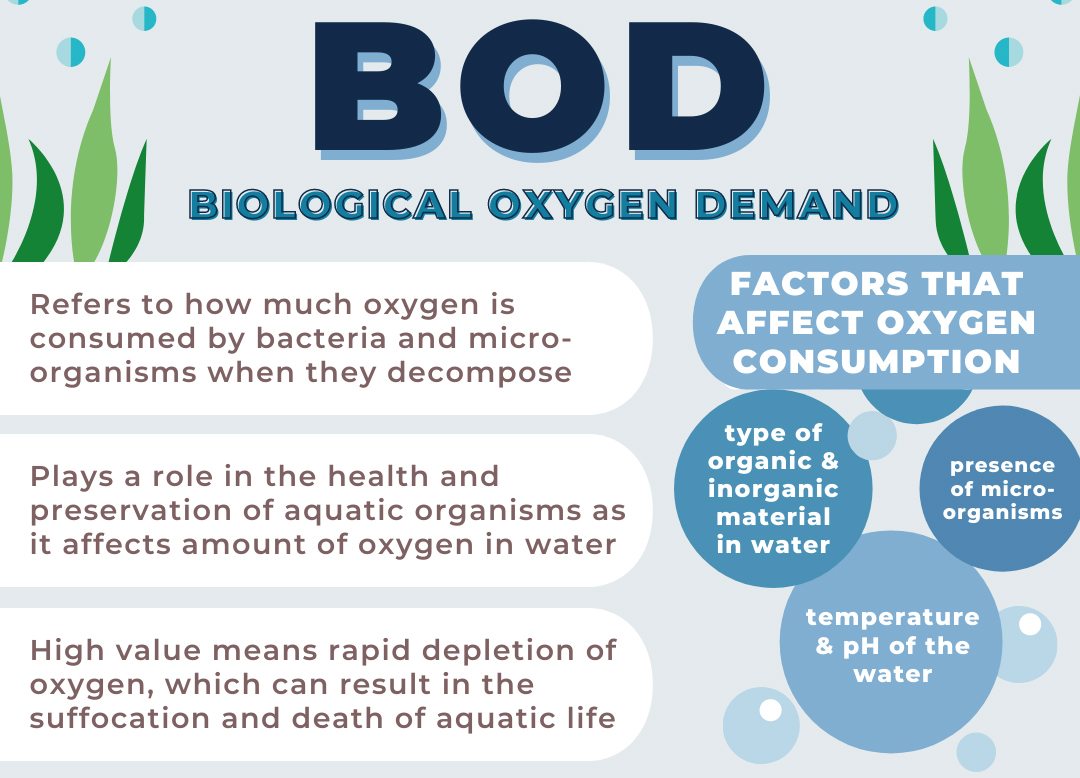India’s River Pollution Challenge: Trends, Causes, and Responses
Context:
India’s rivers have always been central to its ecology, economy, and culture. However, they are under severe stress from rising pollution loads. A recent Central Pollution Control Board (CPCB) assessment report (September 2025) highlights the extent of the crisis. Maharashtra continues to record the highest number of polluted rivers stretches (54), followed by several other states. Although there has been a marginal decline in the number of polluted stretches compared to the last assessment, the overall situation is still critical.
Key Findings of the CPCB Report:
The CPCB reviewed water quality data from 2022 and 2023, covering 2,116 monitoring locations across the country. The findings were stark:
-
- 296 river stretches were polluted on 271 rivers in 32 states and Union Territories. This is a slight improvement from the 311 polluted stretches recorded earlier.
- Of these, 37 stretches were classified as Priority I, meaning they are the most polluted with biochemical oxygen demand (BOD) concentrations above 30 mg/L. This is lower than the 46 stretches under this category in the previous report.
- The worst affected stretches were concentrated in Tamil Nadu, Uttar Pradesh, Uttarakhand (five each), Gujarat (four), and Karnataka (three).
- Notable polluted stretches include the Yamuna (Palla to Asgarpur, Delhi), Sabarmati (Ahmedabad), Chambal (Nagda to Gandhisagar Dam, Madhya Pradesh), Tungabhadra (Karnataka), and Sarabanga (Tamil Nadu).
- Rivers where water quality deteriorated include the Jhelum (Jammu & Kashmir), Ganga, Ramrekha, Sikrahna (Bihar), Hasdeo and Mahanadi (Chhattisgarh), Sal and Mapusa (Goa), Periyar (Kerala), Krishna (Telangana), Amba and Savitri (Maharashtra), and Kosi (Uttarakhand).
- 296 river stretches were polluted on 271 rivers in 32 states and Union Territories. This is a slight improvement from the 311 polluted stretches recorded earlier.
About Biochemical Oxygen Demand (BOD):
BOD is a critical parameter for assessing river water quality. It measures the amount of oxygen required by microorganisms to break down organic matter present in the water.
The CPCB uses this classification to track pollution severity and to prioritise interventions. |
What Constitutes a Polluted River Stretch?
A polluted stretch refers to two or more consecutive locations on a river where the BOD exceeds the prescribed level of 3 mg/L. Such stretches signal a sustained load of pollutants rather than isolated contamination.
Major Causes of River Pollution:
1. Untreated Sewage
-
-
- The largest contributor to river pollution.
- More than 60% of sewage generated daily in India remains untreated and is discharged directly into rivers.
- This makes water unsafe for consumption, spreads disease, and depletes dissolved oxygen, threatening aquatic life.
- The largest contributor to river pollution.
-
2. Industrial Effluents
-
-
- Industries such as textiles, tanneries, sugar, chemicals, and paper discharge toxic heavy metals and chemicals into rivers.
- Many factories either bypass or misuse effluent treatment plants (ETPs), sometimes diluting wastewater to meet official norms.
- Notable hotspots include the Ganga near Kanpur, Yamuna in Delhi, and Damodar in Jharkhand.
- Industries such as textiles, tanneries, sugar, chemicals, and paper discharge toxic heavy metals and chemicals into rivers.
-
3. Agricultural Runoff
-
-
- Fertilisers and pesticides from farmlands wash into rivers during rainfall.
- Nutrients such as nitrogen and phosphorus trigger eutrophication, leading to algal blooms and oxygen depletion.
- In Punjab and Haryana, stubble burning adds ash and residues to rivers through runoff.
- Fertilisers and pesticides from farmlands wash into rivers during rainfall.
-
4. Religious and Cultural Practices
-
-
- Idol immersions, cremation rituals, and offerings add plaster-of-paris, toxic paints, plastics, and floral waste into rivers.
- Ghats in Varanasi and other towns on the Ganga are heavily impacted.
- Idol immersions, cremation rituals, and offerings add plaster-of-paris, toxic paints, plastics, and floral waste into rivers.
-
5. Solid Waste and Plastics
-
-
- India is among the largest generators of plastic waste, much of which finds its way into rivers.
- Urban rivers like the Mithi in Mumbai and drains connected to the Yamuna are choked with solid waste.
- Leachate from landfills such as Delhi’s Ghazipur further pollutes nearby water bodies.
- India is among the largest generators of plastic waste, much of which finds its way into rivers.
-
6. Sand Mining and Encroachment
-
-
- Sand mining alters river flows, increases turbidity, and destabilises riverbeds.
- Illegal encroachment reduces the river’s natural carrying capacity, raising flood risks and pollution load.
- Sand mining alters river flows, increases turbidity, and destabilises riverbeds.
-
7. Thermal and Radioactive Pollution
-
-
- Thermal discharges from power plants increase water temperature, reducing oxygen levels and harming aquatic species.
- Uranium mining in Jharkhand (Jaduguda) has been linked to radioactive contamination of local water bodies.
- Thermal discharges from power plants increase water temperature, reducing oxygen levels and harming aquatic species.
-
8. Climate-Related Stress
-
-
- Erratic rainfall and prolonged dry periods reduce river flow, concentrating pollutants.
- Extreme rainfall events suddenly wash large volumes of contaminants into rivers.
- Erratic rainfall and prolonged dry periods reduce river flow, concentrating pollutants.
-
Consequences of River Pollution:
1. Human Health
-
-
- Polluted water spreads cholera, dysentery, typhoid, and hepatitis, affecting millions annually.
- Polluted water spreads cholera, dysentery, typhoid, and hepatitis, affecting millions annually.
-
2. Damage to Ecosystems
-
-
- Lower oxygen levels and toxic substances kill fish and other aquatic life.
- Loss of biodiversity disrupts food chains and river ecology.
- Lower oxygen levels and toxic substances kill fish and other aquatic life.
-
3. Biomagnification
-
-
- Pollutants like heavy metals accumulate in small aquatic organisms and magnify through the food chain, entering the human body.
- Pollutants like heavy metals accumulate in small aquatic organisms and magnify through the food chain, entering the human body.
-
4. Flood Risk
-
-
- Waste accumulation and sand mining disturb river flows, contributing to urban and rural flooding.
- Waste accumulation and sand mining disturb river flows, contributing to urban and rural flooding.
-
Legal and Constitutional Framework:
|
Key Government Schemes and Initiatives:
1. Namami Gange Programme (NGP)
-
-
- Launched in 2014, implemented by the National Mission for Clean Ganga (NMCG).
- Fully centrally funded.
- Focuses on sewage treatment, riverfront development, surface cleaning, afforestation, industrial effluent monitoring, public awareness, and village-level interventions (Ganga Gram).
- Represents a shift from simple pollution control to holistic river basin management.
- Launched in 2014, implemented by the National Mission for Clean Ganga (NMCG).
-
2. National River Conservation Plan (NRCP)
-
-
- Initiated in 1995 to reduce pollution in rivers outside the Ganga basin.
- Initiated in 1995 to reduce pollution in rivers outside the Ganga basin.
-
3. Amrit Sarovar Mission
-
-
- Launched in 2022 to rejuvenate 75 water bodies in each district across the country.
- Launched in 2022 to rejuvenate 75 water bodies in each district across the country.
-
4. National Water Mission
-
-
- A component of the National Action Plan on Climate Change (NAPCC).
- Focuses on integrated water resource management, reducing wastage, and equitable distribution.
- A component of the National Action Plan on Climate Change (NAPCC).
-
5. Other Measures
-
-
- CPCB sector-specific charters for industries (e.g., pulp & paper, textiles, sugar).
- Promotion of sustainable agriculture and hazard management under NMCG.
- Local-level initiatives for waste segregation and decentralised treatment.
- CPCB sector-specific charters for industries (e.g., pulp & paper, textiles, sugar).
-
Way Forward:
1. Strengthen Sewage Infrastructure: Build and upgrade sewage treatment plants with emphasis on operation and maintenance.
2. Strict Industrial Regulation: Enforce zero liquid discharge and penalise industries bypassing ETPs.
3. Agricultural Reforms: Promote organic farming, regulate fertiliser use, and incentivise alternatives to stubble burning.
4. Community Participation: Encourage public awareness campaigns and involve local communities in monitoring.
5. River Rejuvenation Over Cleaning: Adopt basin-level approaches instead of city-centric projects.
6. Use of Technology: Deploy real-time monitoring sensors and GIS tools for pollution tracking.
7. Climate Adaptation: Integrate water quality goals with climate resilience plans.
Conclusion
Rivers are not just ecological assets but also lifelines for India’s economy, culture, and public health. The CPCB’s latest findings show some decline in the number of polluted stretches, but critical hotspots remain widespread. Tackling river pollution requires more than piecemeal projects; it demands sustained political will, strong enforcement, technological innovation, and community involvement. Only then can India move towards restoring its rivers as clean, living ecosystems.
| UPSC/PSC Main Question: Critically examine the role of river interlinking as a measure to manage water stress in India. In the context of river pollution, what ecological and hydrological risks must be considered? |








